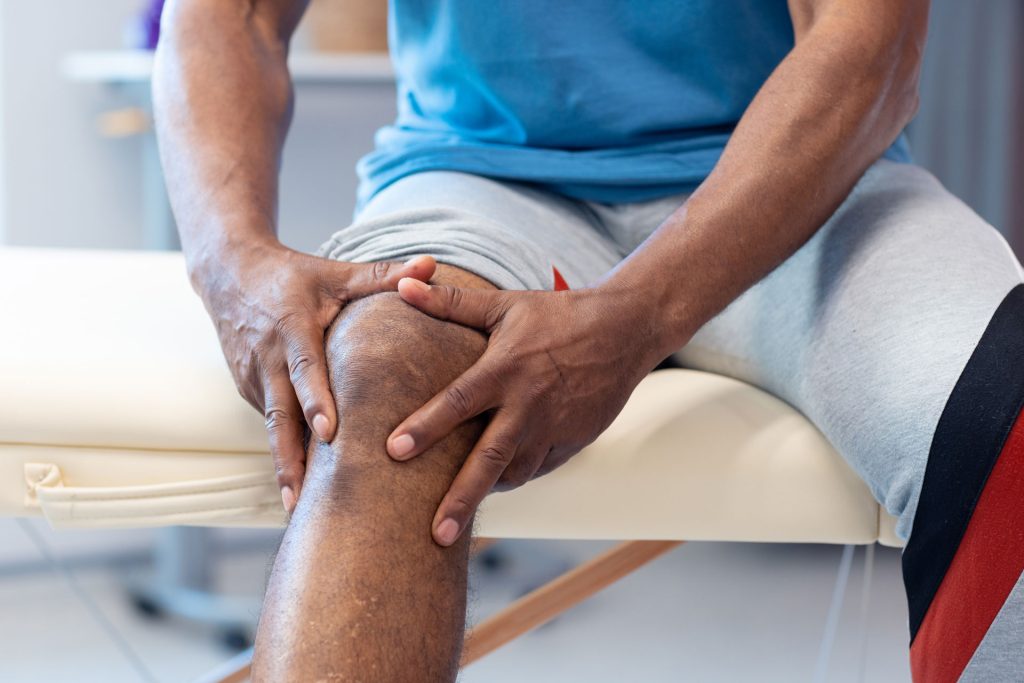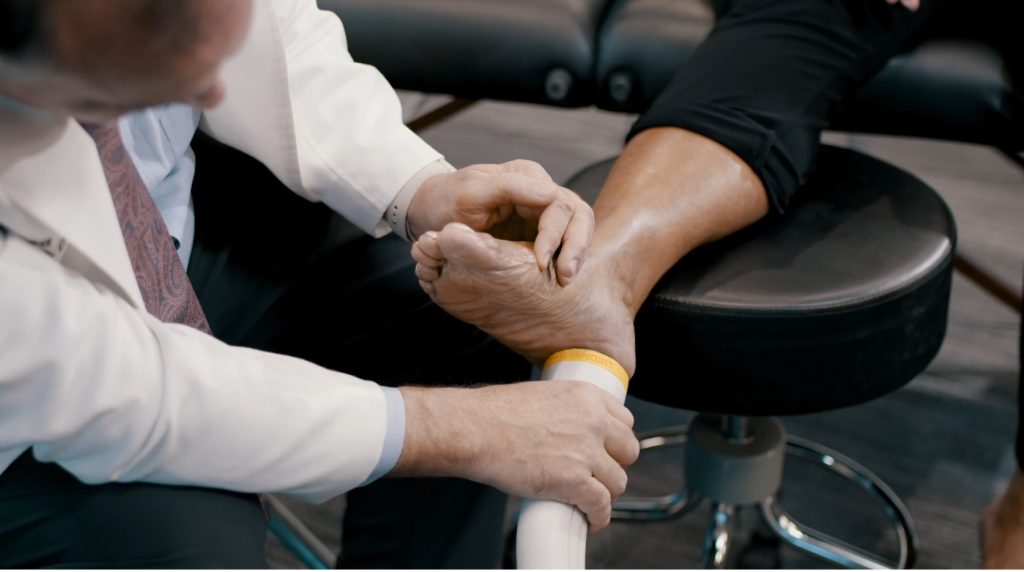Managing pain effectively is a challenge that impacts countless individuals worldwide. Traditional methods, while helpful for many, often fall short when it comes to providing long-term relief or avoiding invasive procedures. This growing need for innovative solutions has led to a revolution in pain management approaches.
Among these advancements, SoftWave Therapy emerges as a groundbreaking treatment, offering promising results for a range of conditions. By harnessing focused acoustic wave technology, this therapy not only targets pain at its source but also promotes natural healing processes within the body.
The Benefits of SoftWave Therapy for Pain Relief
SoftWave Therapy stands out as a cutting-edge approach in pain management, offering several significant benefits for those seeking effective yet non-invasive solutions. Here are five key advantages:
- Accelerates Healing and Recovery
SoftWave Therapy boosts the body’s natural healing processes by enhancing blood flow and stimulating cellular repair. Acoustic waves penetrate deep into tissues, delivering increased oxygen and nutrients to support recovery. This reduces downtime, making it a valuable option for individuals with chronic pain or injuries. - Reduces Pain and Inflammation
By stimulating the release of endorphins, SoftWave Therapy provides immediate pain relief. It also aids in reducing inflammation by promoting the removal of inflammatory mediators, making it ideal for managing acute and chronic pain conditions. - Non-Invasive and Drug-Free
Unlike surgical procedures or pharmaceutical treatments, SoftWave Therapy is entirely non-invasive. It requires no anesthesia, incisions, or medications, eliminating risks associated with traditional approaches and allowing patients to resume daily activities quickly. - Enhances Range of Motion and Flexibility
This therapy promotes collagen production, essential for tissue repair. By addressing stiffness and improving elasticity, it restores mobility and aids individuals in regaining functionality. - Prevents Future Injuries
Regular sessions strengthen tissues, reducing the risk of re-injury. It’s a preventive measure for those involved in repetitive or high-impact activities.
With minimal risks and proven effectiveness, SoftWave Therapy is shaping the future of pain management.
Related: SoftWave Therapy for Musculoskeletal Issues: What You Need to Know
SoftWave Therapy vs. Traditional Pain Management Methods

When exploring different approaches to pain relief, it’s crucial to understand how SoftWave Therapy compares to conventional methods like surgery and medication. While traditional treatments often focus on masking symptoms, SoftWave Therapy offers a regenerative, non-invasive alternative that targets the root cause of pain. Here are the key distinctions:
- Non-Invasive Procedure
- Traditional methods like surgeries are invasive, requiring incisions, anesthesia, and lengthy recovery periods. SoftWave Therapy provides a non-invasive solution that allows patients to resume daily activities almost immediately.
- Regeneration vs. Symptom Management
- Medications and corticosteroid injections temporarily reduce pain and inflammation but do not promote tissue repair. SoftWave Therapy stimulates the body’s natural healing process, encouraging cellular repair, stem cell activation, and new blood vessel growth.
- Minimal Risks
- Surgical interventions can lead to complications and extended downtime, while medications may cause dependency and side effects. SoftWave Therapy is FDA-cleared and carries minimal risks, with patients typically experiencing only mild, temporary discomfort during sessions.
With its ability to repair and regenerate tissues without invasive procedures or drugs, SoftWave Therapy represents a breakthrough in pain management. This innovative treatment offers lasting relief and improved quality of life, making it a standout choice for individuals seeking safe and effective care.
Related: Healing at the Speed of Sound: The Benefits of SoftWave Therapy
Conditions SoftWave Therapy Can Treat
SoftWave Therapy is an advanced treatment that addresses a wide array of conditions, making it a versatile option for both chronic and acute pain management. By leveraging acoustic wave technology, it promotes natural healing processes and provides effective relief. Below are some of the key conditions SoftWave Therapy can treat:
- Arthritis
SoftWave Therapy alleviates joint pain and stiffness associated with arthritis, improving mobility and reducing inflammation. - Tendinitis
Ideal for conditions like tennis elbow, Achilles tendinitis, and golfer’s elbow, this therapy enhances tissue repair while reducing pain and swelling. - Plantar Fasciitis
Patients suffering from heel and foot pain experience significant relief due to improved blood circulation and reduced inflammation. - Shoulder Impingement and Frozen Shoulder
SoftWave helps restore range of motion by regenerating damaged shoulder tissues and soothing inflammation. - Back and Neck Pain
Chronic back pain, spinal issues, and neck strain benefit from this non-invasive approach aimed at repairing damaged muscles and connective tissues. - Sports-Related Injuries and Overuse Syndromes
From sprains and muscle strains to shin splints, this therapy accelerates healing, enabling athletes to return to activity faster.
SoftWave Therapy is FDA-cleared and offers a safe and effective alternative to traditional treatments, targeting the root cause of pain while boosting the body’s ability to heal naturally.
Related: Say Goodbye to Chronic Pain with SoftWave Therapy
The Role of Natural Healing in SoftWave Therapy
SoftWave Therapy is designed to harness and enhance the body’s natural healing abilities, providing a groundbreaking approach to pain management and recovery. At the core of its effectiveness lies its ability to stimulate specific biological processes that support tissue repair and regeneration. By delivering acoustic waves into targeted areas, SoftWave Therapy activates dormant stem cells, prompting them to migrate to sites of injury or inflammation. These cells play a critical role in regenerating damaged tissues, making this therapy particularly impactful for chronic injuries or degenerative conditions.
Another vital mechanism in SoftWave Therapy is its promotion of improved blood flow and angiogenesis, the formation of new blood vessels. Enhanced circulation ensures that oxygen and nutrients are delivered to damaged tissues while waste products are efficiently removed, accelerating the healing process. Additionally, SoftWave Therapy modulates inflammation, proactively reducing swelling and pain without the need for medication or invasive procedures.
Unlike traditional treatments, SoftWave Therapy addresses the root cause of pain rather than merely masking symptoms. Its non-invasive application eliminates the risks associated with surgery or pharmaceuticals while promoting long-term healing. Safe, effective, and natural, this innovative therapy exemplifies the shift towards regenerative medicine, offering patients a pathway to lasting relief and restored functionality.
Related: From Aches to Action: How SoftWave Therapy Restores Mobility
A Closer Look at the Safety and Side Effects of SoftWave Therapy

SoftWave Therapy is widely recognized as a safe and effective treatment for pain and tissue regeneration, offering significant advantages over invasive methods. Its non-invasive approach eliminates the need for surgery, anesthesia, or medications, making it an excellent option for patients seeking low-risk pain management. Below is a closer look at its safety profile and potential side effects:
- Mild Discomfort
Many patients may experience slight discomfort during or after the procedure, particularly in the area with damaged tissues. This temporary sensation typically resolves within hours. - Skin Redness or Irritation
Treated areas might exhibit minor redness or sensitivity shortly after the session. These are mild and short-lived, usually disappearing within a day or two. - Rare Complications
Though uncommon, rare side effects such as minor swelling, changes in sensation, or blistering might occur. These events are considered infrequent and subside quickly with proper care.
SoftWave Therapy is FDA-cleared, ensuring adherence to rigorous safety standards. With its minimal side effects and lack of associated downtime, this therapy allows patients to resume daily activities immediately. Its favorable safety profile and effective, natural healing processes highlight why it is becoming a preferred choice for managing pain and promoting recovery.
SoftWave Therapy in Chronic Versus Acute Pain Management
SoftWave Therapy stands out as a versatile treatment for both chronic and acute pain, offering relief and promoting healing through innovative acoustic wave technology. Its ability to stimulate the body’s natural healing processes makes it a prominent option for pain management, particularly at Benson Chiropractic in Muscoda, Wisconsin, under the expert care of Dr. Victor Benson.
For chronic pain, SoftWave Therapy effectively targets long-standing issues like arthritis, tendinitis, and joint degeneration:
- Reduces persistent inflammation that exacerbates chronic conditions.
- Promotes blood flow and tissue regeneration for sustained relief and improved mobility.
- Activates dormant stem cells, encouraging natural repair and minimizing long-term discomfort.
When addressing acute pain, such as sports injuries or recent muscle strains, this therapy excels in accelerating recovery:
- Improves circulation to deliver oxygen and nutrients to injured areas.
- Alleviates swelling and soreness, often experienced after acute injuries.
- Minimizes downtime, allowing patients to return to daily activities quickly and safely.
SoftWave Therapy balances immediate results with long-term healing, providing an effective, non-invasive alternative to surgical interventions or medication-based treatments. Visit Benson Chiropractic in Muscoda, Wisconsin and discover how Dr. Victor Benson and SoftWave Therapy can help you regain mobility and a pain-free life. Schedule your consultation today.

